The mystery of African puppets
African puppets are relatively unknown in Europe. From various sources (literature, conversations with experts, and short periods of fieldwork) I have gathered that traditional puppet theatre exists in Mali, Niger, Nigeria, Cameroun, Gabon, and Congo. Modern types of puppetry may be found in Togo, Nigeria, Zaïre, Burundi, and South Africa. Most of the puppets are rod, string or hand puppets; there are no shadow figures. They may be articulated or non-articulated, as is the case with (small) statues and 'marottes' (a head mounted on a stick, representing human types, known in Europe as a 'fool's bauble').
The ritual origin of African puppets is obvious: small statues were and are used in ancestor worship and by initiation societies. Even when the context is secular, there is a feeling of sacredness, as is the case with the Bamanan and Bozo puppets discussed below. Puppets are sacred and mysterious, a double of man, created to project his being, but also a double of society. Their performances are often funny and destined to make people laugh. Sexuality, a source of social tension, and its corollary fertility are favourite themes in this type of popular entertainment.
Some types of African puppetry are small-scale and satiric, a bit like the English Punch and his European cousins Pulcinella, Polichinelle, and others. This is the case in southern Niger, where the Hausa puppeteer, hidden under his long gown, plays small scenes with two unarticulated puppets representing characteristic types such as the man who beguiles women with his sexual parts, the marabout (islamic priest) seducing a young girl, the dancing cousins, and so on. His text, spoken through a voice-distorting device, is 'translated' by his helpers. Two drums accompany the performance. In the Congo the puppets have the shape of a bauble, a head on a stick. The puppeteer is covered entirely by a cloth, from which only the puppet sticks out. Traditional as well as modern characters are represented: village-heads, civil servants, soldiers, Frenchmen, and even an Indian and a Chinese. These puppets are used during the 'kyebe-kyebe' ritual of the Kuyu.
Another form of, very small-scale, puppetry is what I call 'big-toe-theatre', also called 'mini-puppets'. They consist of two small puppets on strings, usually a male and a female, facing each other and often depicting love-making. The strings are attached to the big toes of the puppeteer who manipulates the puppets by beating his hands on his thighs. Originally they were used for divination, but now it is generally child play. They are to be found in West and Central Africa.
Mali
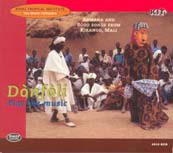
Article: 'Puppets and masks of the Bamanan and the Bozo (Mali)' (including mp3 music samples)
Kirango, in the arrondissement Markala, is a village with over six thousand inhabitants, located on the bank of the Niger river about 40 kilometres north east of the city of Ségou.
During the masquerades of the Bamanan and Bozo of Kirango, large puppets in the shape of mythical animals (sogow, literally 'meat') are made to dance by puppeteers that are hidden inside. Some of the animals carry small rod puppets on their back (maanin, literally 'little people'), which 'dance' as well. They alternate with masked dancers, equally representing mythical animals and symbolic persons.
My knowledge of the masquerades of Kirango and surrounding villages stems from a number of visits, the first one dating from December 1988 when I travelled to Mali for the first time. I had just finished a small exhibition on puppets in the department of Music, Dance and Theatre of the Tropenmuseum. There were practically no African puppets in the collection of the museum, and when I asked about them I was told that the Bamanan of Mali used puppets. Olenka Darkowska and her husband Denis Nidzgorski, who have been doing research on puppetry in Africa for years, provided me with addresses and tips which turned out to be extremely valuable. Serendipity favoured me, and some of the mystery of Malian puppetry was revealed to me.
In 1990 the International Puppet Theatre Festival of Amsterdam organised a festival and wanted to include puppetry from Africa. I went to Kirango in March, in order to see whether a group could be assembled for a European tour, and in October I returned to accompany them during the tour. Although this type of theatre had never been seen in Europe, the tour was a success and the public was delighted.
Since I had not yet witnessed the 'real' festival, I went back in June 1991, on vacation, to see whether it would be very different from what they showed on the European stage. To my reassurance, it was not. By then, a bond of mutual friendship and respect had been formed, and the subject of Malian (and African) puppetry became more and more fascinating to me. Little is known about it, contrary to for instance the puppetry in Asia which is much more widely known and better documented. The idea of a large exhibition on African and Asian puppets slowly grew in my mind. The collection of the Tropenmuseum and other museums in Europe contained puppets from many Asian countries but few from Africa. Therefore, I went to Mali and Togo, in order to collect sets of puppets as complete as possible, including masks, backdrops, and musical instruments. In 1996 a large exhibition on puppetry from Africa and Asia could be seen in the Light Hall of the Tropenmuseum.
In 1997, I went back to Kirango in order to make recordings for a CD; in 1998 'Dònfòli / Play the music. Bamanan and Bozo songs from Kirango, Mali' was published with PAN records, in co-operation with the Royal Tropical Institute (no.4010KCD).
From September 2001 till September 2002, I spent a year doing more in-depth research, together with Mamadou Kéïta, my Malinese counterpart. The aim was to study and document the traditional masquerades of the Bamanan in the area of Ségou : the history, function and meaning of the puppets / masks, as well as the accompanying music, songs and dances, from an anthropological perspective and considering the social context and the changes that occur therein.
The project was coordinated by N.G.O. 'Alphalog' (Ségou). The Royal Tropical Institute (Amsterdam), where I worked as curator of the Department of Ethnomusicology, paid my salary and my travel expenses. The expenses in Mali, including the production of books and video documentaries, were paid by the Prince Claus Fund (The Hague).
Article: 'Sogo bò, the Bamanan masquerade'
In 2005, I recorded a number of events relating to puppetry, in Ségou and Kirango. In February the Bozo/Somono fishermen of the Jaka quarter of Kirango performed at the first Festival sur le Niger in Ségou. They were very much appreciated by the public and have returned every year, drawing large audiences. In July I recorded two events in Kirango: the circumcision ceremonies of the Bozo/Somono (which included a masquerade) of the Jaka quarter, and masquerades of the Bamanan children. This resulted in two DVD's, with slide shows and films:
DVD 1 - Children's masquerades of the Bamanan
DVD 2 - Circumcision ceremonies and masquerades of the Bozo
Article and photos of the Bozo circumcision and masquerades
In 2007, I filmed the masquerade of the Bamanan, resulting in a DVD.
DVD 3 - Bamanan masquerade
In 2008, I recorded Bozo songs of the Jaka quarter, mostly relating to masquerades. Members of the youth association of this quarter performed at the Festival de l'Imaginaire in Paris (March 2008).
CD - Bozo songs of Kirango
Togo
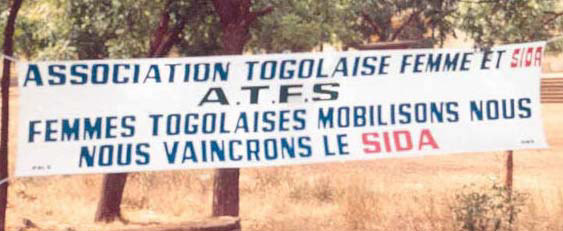
Article: 'Aids? If only I had known!' (including mp3 music sample)
Puppet theatre can have an educational function, providing people with guidelines on how to live and how to behave. Modern types of puppet theatre use traditional elements without being bound to traditional sub-jects or rituals, thereby enabling puppeteers to deal with delicate issues like aids, birth control, etc. The Compagnie Danaye is a good example of this. Together with the Togolese Association for Women against Aids (ATFS), Danaye wrote a play called "Ah, Aids, if only I had known!" and made a set of string puppets with characters like Thing and Affair (the female and the male sexual parts on legs!), the Professor who informs those present about aids, a young man who does not take him seriously and accuses 'those whites' of imposing the use of condoms so that blacks cannot reproduce themselves, and a woman who dies of aids.
In December 1993, I went to Dapaong in the north of Togo with the Compagnie and members of the ATFS, where this play was performed on December 1 (Aids Day). It was quite an adventure! After the tour, the puppets, instruments and backdrop were purchased by the Tropenmuseum, where they could be seen in the exhibition on puppets from Africa and Asia.
India
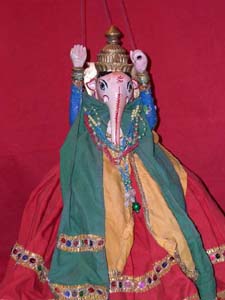
Stringpuppet from Maharashtra (Ganesha)
My first acquaintance with Indian puppetry dates from 1987, at the occasion of a performance during the International Puppettheater Festival in Amsterdam, of glovepuppets from Kerala by the group 'Natanakairali' directed by Gopal Venu. The Tropenmuseum -where I was curator at the time- bought a set of glovepuppets from Natanakairala, of which three may be viewed in the Department of Music, Dance and Theatre. They depict a famous episode from the 'Mahabharata' epic: Duryodhana, the leader of the Kaurawas, wins the wife of the Pandawas, Draupadi, at a game of dice. The god Krishna intervenes and saves Draupadi from the hands of Duryadhana.
The public of the Tropenmuseum was able to see four kinds of puppetry from India during the exhibition 'Verre Vrienden van Jan Klaassen. Poppenspel in Afrika en Azie' (Distant Friends of Jan Klaassen. Puppetry in Africa and Asia), on view in 1996 and which included videofragments. They come from Kerala, Rajasthan, Andra Pradesh as well as Orissa, and are part of the collection of the museum.
At that point it was clear to me that there was much puppetry to be found in India, something which also became obvious when I studied the relevant literature. Little did I know that a few years later I would have a chance to be present at a large puppetfestival in India... In March 2003 the Sangeet Natak Akademi in New Delhi organized a large puppet festival, together with the India International Centre and the Indian Council for Cultural Relations. The festival was held in honour of the 50th birthday of the Akademi, and in memory of the late Kamladevi Chattopadhyay.
35 Groups performed, of which 18 traditional groups from different states: Karnataka (4), West Bengal (3), Andra Pradesh / Kerala / Orissa / Tamil Nadu (2 each), and Rajasthan / Maharashtra / Assam (1 each). For twelve nights different groups performed, ususally accompanied by live music.
At the occasion of the festival an exhibition was organized, showing around 200 puppets from the collection of the Sangeet Natak Akademi. A lovely sight! (Photo's of a number of these puppets can be seen in the article below. )
There was also a two-day symposium with the title 'Puppetry: East-West, West-East', in association with the Union Internationale de la Marionnette (UNIMA). My contribution consisted of a lecture about the exhibition 'Distant Friends of Jan Klaassen', shown in the Tropenmuseum in 1996. The organization was excellent and being there was a fantastic experience!
Article: 'Puppet Festival in New Delhi, 2003' (including photographs and video)
Burma (Myanmar)
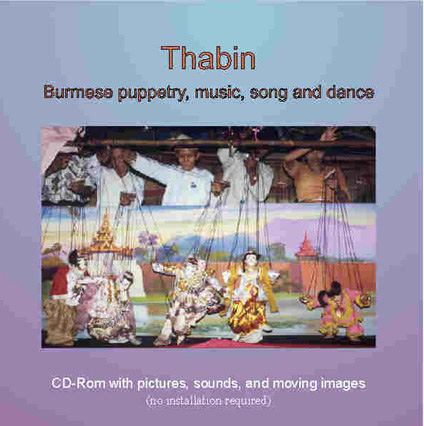
Online preview of CD-Rom 'Burmese Puppetry' (including mp3 music sample)
I met Naing Yee Mar, co-owner of the Mandalay Marionettes Theatre, in Amsterdam, when I was preparing the exhibition on puppetry from Africa and Asia which was shown in the Tropenmuseum in 1996. (A beautiful set of Burmese puppets was shown there, with the accompanying musical instruments.) In 1996 and 1997 I made various trips to Burma to study the puppet theatre there, met puppeteers in Rangoon, Bagan and Mandalay, and took photographs and made sound and video recordings. Especially the people of the Mandalay Marionettes Theatre and Dr Tin Maung Kyi assisted me as much as they could, for which I am very grateful. The CD-Rom "Thabin. Burmese puppetry, music, song and dance" is the result of this close co-operation. It is divided into five 'chapters'. The first one deals with the performance, the second one with the puppets and the characters they portray, the third chapter shows how a puppet is made, the fourth one deals with the music, and chapter five shows the relationship of the puppets and the human ritual world.
Article: 'Ah Myint Thabin, traditional puppetry of Myanmar (Burma)'
Brazil
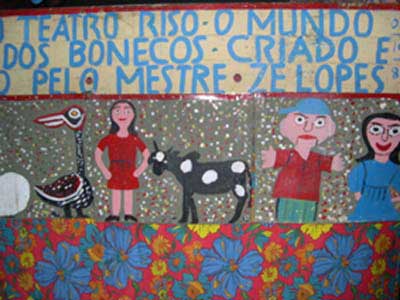
In June 2001 the Seventh International Biannual Puppet Festival of Evora (BIME) was held in Portugal. At that occasion, theThird International Puppet Seminar of Evora (SIME) was organised by the Centro Dramático de Evora (CENDREV) by Dr. Christine Zurbach of the University of Evora. The theme of the seminar was Portuguese puppets (bonecos de Santo Aleixo) and Brazilian puppets (mamulengo). A number of experts were present: from Portugal (Alexandre Passos, Christine Zurbach) and from Brazil (Izabela Brochado, Magda Modesto, Chico Simões). Lectures presented by them, as well as articles written by Fernando Augusto Gonçalves dos Santos, were published in 'Teatro de Marionetas. Tradição e modernidade', edited by Christine Zurbach (Evora: Casa do Sul, 2002).
In February-March 2004 I travelled to Brazil, and spent some time in Olinda (Pernambuco) with Izabela Brochado, who teaches at the University of Brasília and is a puppeteer as well. She was into her third year doing research and doing fieldwork in the state of Pernambuco. We discussed her research, and I read some of the relevant literature. We visited the Mamulengo Museum in Olinda and took pictures of many puppets exhibited there. And, of course, Izabela took me to meet puppeteers and see their performances.
Article: 'Mamulengo, the Theater of Laughter' (including photographs and video)
Home



